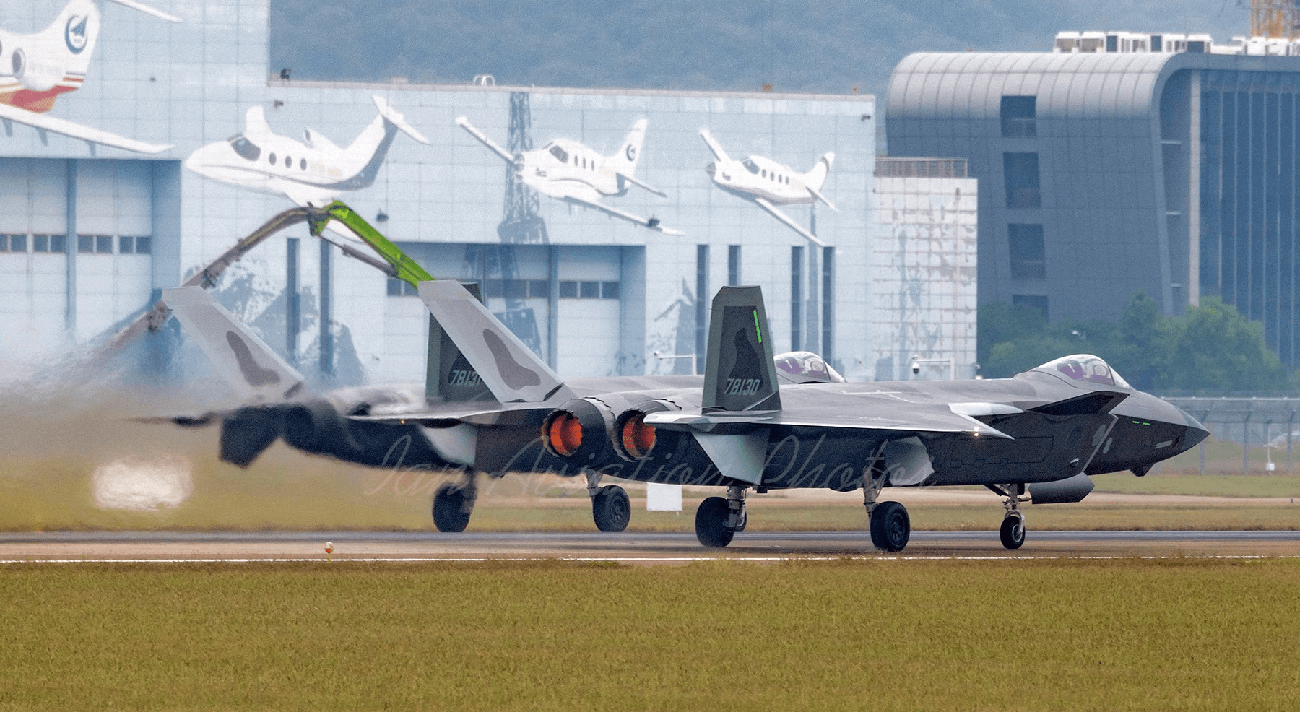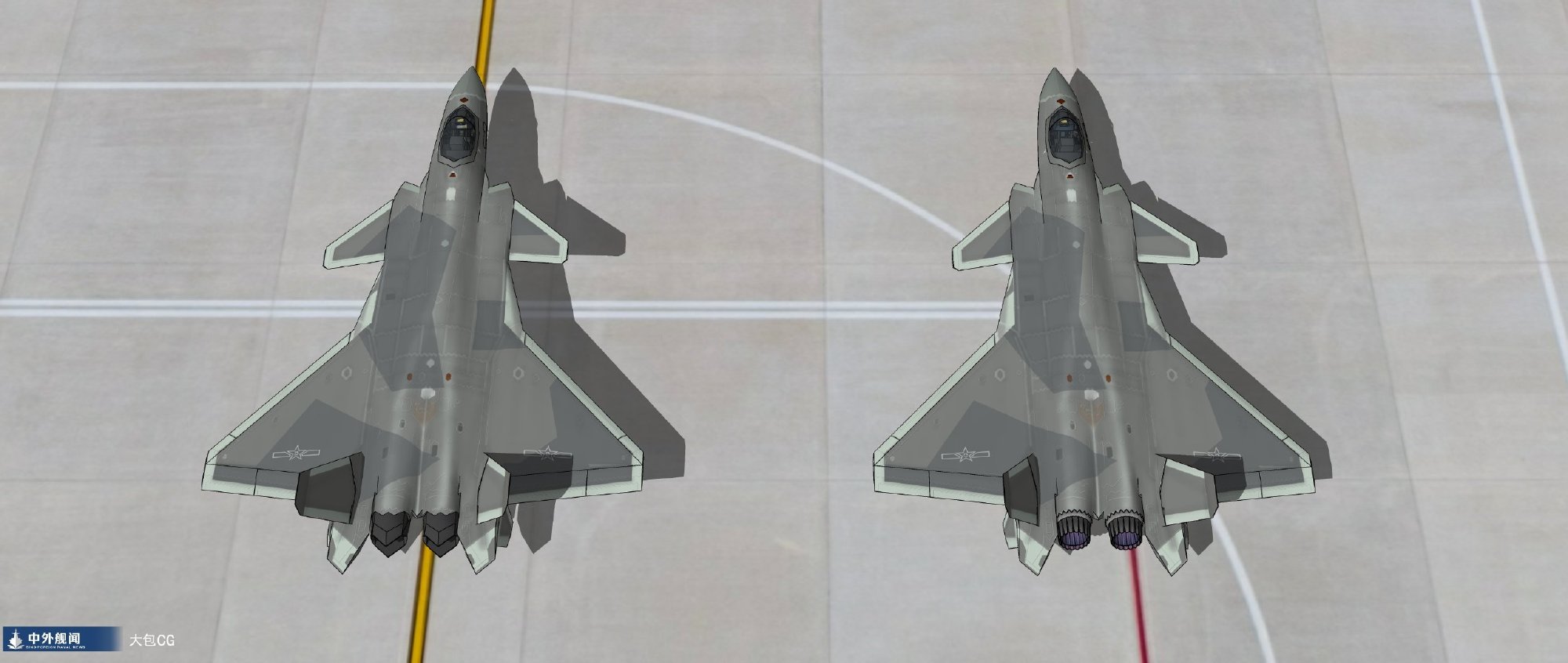China’s J-20 stealth fighter will act as the ‘eyes’ and ‘ears’ of the J-16 and J-10C jets for the other two to release their massive payload of ordnance, with the team of three utilizing each fighter’s core strengths.
The trio’s teaming of the People’s Liberation Army Air Force’s (PLAAF) frontline multirole aircraft and their tactical arrangement was stated by a J-16 pilot at the recently concluded Zhuhai Air Show. This has confirmed the long-running belief amongst media, experts, and Chinese military watchers.
With tensions rising again in the Taiwan Straits between the People’s Republic of China (PRC) and Taiwan, the United States (US), and Japan, the information gives a possible glimpse of how a military intervention and air campaign might play out.
The PRC had used the J-20 for the first time in the live-fire military drills around Taiwan in August in retaliation to US Speaker Nancy Pelosi’s visit to the island.
This was followed by the J-20 being publicly displayed at the airside in the Zhuhai Air Show, where two jets landed and parked for a few hours.
J-20s have never been displayed up close and have only undertaken fly pasts and aerobatic displays. The latest information about the ‘trio teaming’ clearly bares China’s complete confidence in its homegrown product and operational readiness.
I See, You Fire?
Speaking to China Central Television (CCTV) on November 8, J-16 pilot Zhang Yang said, “The J-20, J-16, and J-10C are the three current main fighter jets (of the Chinese air force).
The three models are utilized together, mainly with the J-20’s great capacity of situational awareness guiding the two other models, while the J-16 and J-10C exert their firepower superiority.”
He also praised his fighter’s (the J-16) versatility of possessing a greater range, payload capacity, and powerful radar.
“On the battlefield, it can seize air supremacy and assault ground and sea targets. It can be used for attacks and defenses, and it will definitely exert its powerful combat capability in future combat scenarios.”
Yang’s claim is conceivable when considering the facts around the J-20 and available information and assessments about Chinese military doctrine and politico-military thought. Like the F-35, the J-20 is electronically more advanced than Generation 4++ jets.
It was gathering data and information through multiple sensors throughout the aircraft to make optimal tactical and combat decisions the focus. The emphasis on such enhanced situational awareness is a part of an emerging – and now possibly established – Chinese military belief in ‘intelligentized warfare.’
But the J-20 cannot carry ordnance outside its internal and ventral bays to preserve stealth, and this is where the J-16 and the J-10 payload capacities come in. The J-20 focuses on situational awareness and surveillance by exploiting its stealth and passing on the information to the J-16 and J-10 ‘missile trucks’.
The J-20 has been expected to act like a ‘sniper,’ where it might use its near-invisibility to slip past fighter screens and take out vulnerable assets like air-to-air refueling tankers and airborne early warning aircraft (AEW). All three fighters can carry the PL-15 Beyond Visual Range (BVR) missile, which can reach ranges of more than 200 kilometers.

The J-16 and the J-10C also possess Active Electronically Scanned Array Radars (AESA) radars that provide excellent detecting and tracking abilities. By themselves, they, too, are formidable platforms for taking on enemy fighters.
The first official indications of the J-20 operating in tandem with other fighters appeared in August when the PLAAF released a picture of the YU-20 tanker refueling a J-20 and a J-16.
This was the first time a photograph of the three planes undertaking the mid-air refueling was released. Before that, in November 2021, the J-20, J-16, and J-10C conducted “strategic coordination combat training.”
China’s Intelligentized Warfare
The doctrine focuses on providing the highest possible level of information and intelligence of a battlespace available to a warfighter (in this case, a J-20 pilot) to make the most optimal decisions.
The J-20 has been speculated to have highly advanced data processing and sensor fusion systems, where information from other friendly assets like fighters, reconnaissance, electronic warfare (EW), early warning planes, drones, and even satellites is received.

The J-20’s Chief Designer, Yang Wei, told Global Times in an interview, “Information has now become the deciding factor, as modern fighter jets focus on gaining more information with the help of AESA radars and data chains, while also reducing opponents’ ability to gain information, including using stealth technology and electronic countermeasures.”
“When aircraft can get more information with these advanced devices, pilots must have extensive knowledge, sharp analysis, and sound decision-making to put them to use,” Wei added. Artificial intelligence will help pilots process the information and make them mission objective-oriented by leveling up the observe-orient-decide-act (OODA) loop to OODA 3.0.
The range, combat endurance, powerful stealth, heavy payload of air-to-air and air-to-ground missiles, and the ability to provide the pilot with “easy-to-understand” battlefield situation images drawing and transmitting to and from all friendly assets in an “integrated network” are vital according to Wei.
The Shenyang Aircraft Corporation’s (SAC) J-16 is a twin-engine dual-seat multirole air superiority fighter, which has evolved from the J-11 and is often considered in the same class or equal to the American F-15E. The J-11 is a Chinese derivative of the Russian Sukhoi Su-27.
The J-10C, on the other hand, is often compared to the world’s leading single-engine fighters like the F-16 and the Swedish SAAB Gripen. China counts the J-16 and J-10C in the Generation 4++ class, just a level under the Generation 5 category.
- The author can be reached at satamp@gmail.com
- Follow EurAsian Times on Google News




